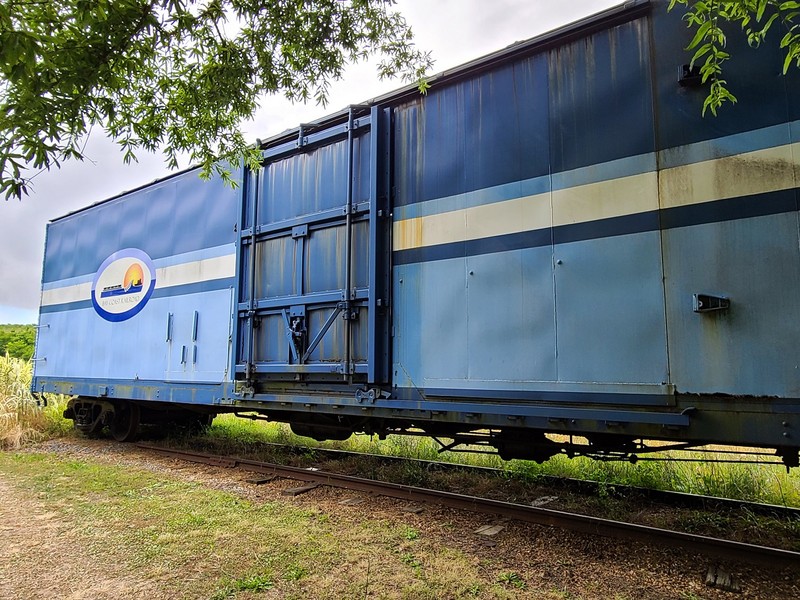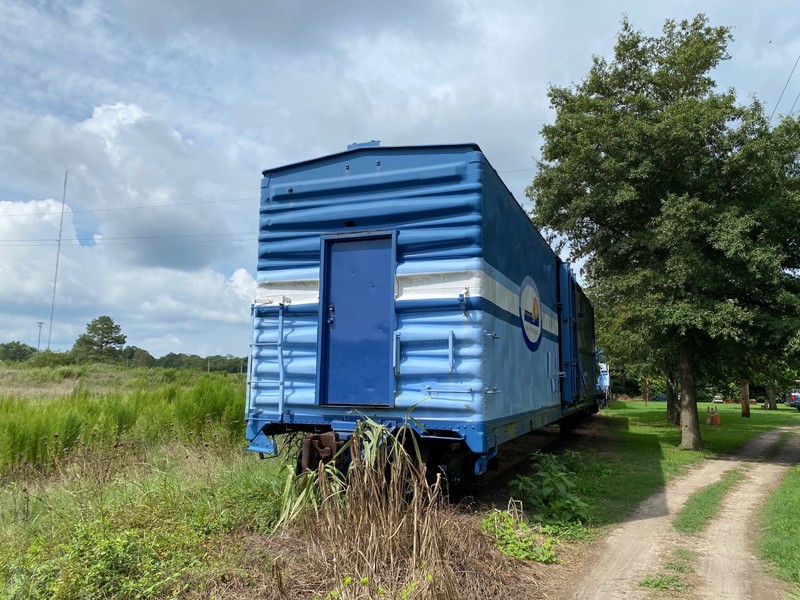Boxcar
Introduction
Text-to-speech Audio
Behind the tank car is a circa 1950s, fifty-foot, general-service boxcar, an example of a standard design widely used since the 1940s and commonly seen on American railroads through the 1980s. It has a single sliding door on each side; the door at the end of the car was added later. This boxcar was likely acquired by the Eastern Shore Railroad (ESHR) in the 1980s.
Images
Box Car

Back End of Box Car

Backstory and Context
Text-to-speech Audio
Boxcars are enclosed cars designed to protect freight from the elements. Boxcars have been used since the 1830s to carry any kind of non-bulk cargo that will fit in their single, double, or end doors. By the 1870s American railroads had adopted interchange agreements allowing boxcars to be exchanged among railroads, which is why you will find boxcars lettered and numbered by various owners in any given rail yard. By the mid-twentieth century boxcars had to compete with containerized shipping in which goods secured in a closed container can be hauled by truck, ship, or atop railroad flat cars. Thanks to their sturdy construction, many boxcars have since been repurposed as sheds or incorporated into buildings. Today you can even find boxcars fitted out as overnight accommodations that can be rented through Airbnb.
During the early 1900s, the New York, Philadelphia and Norfolk Railroad, the first north-south railroad on Virginia’s portion of the Delmarva Peninsula, was formally purchased by the Pennsylvania Railroad Company. Through the 1920s, thousands of freight cars, mostly boxcars, traveled the tracks south to the Cape Charles rail yard. Freight trains could be a hundred cars long. Twenty-five thousand loaded freight cars could be hauled across the Chesapeake Bay on about 1,000 barge trips in a single month.
This boxcar was likely acquired by the Eastern Shore Railroad (ESHR) in the 1980s, following use by the US military. Rather than investing the funds to make it road-worthy for freight shipments, it was adapted for use by ESHR as a machine shop for needed mechanical or carpentry work. The door at the end would have been added during this renovation. The Bay Coast Railroad (BCR) later used the boxcar for secure storage of equipment.
Sources
Treese, Lorett, "Boxcar" Cape Charles Historical Society. 2020.
Personal Interview with former BCRR employee Alex Perry.
Cape Charles Historical Society and Museum
Cape Charles Historical Society and Museum
